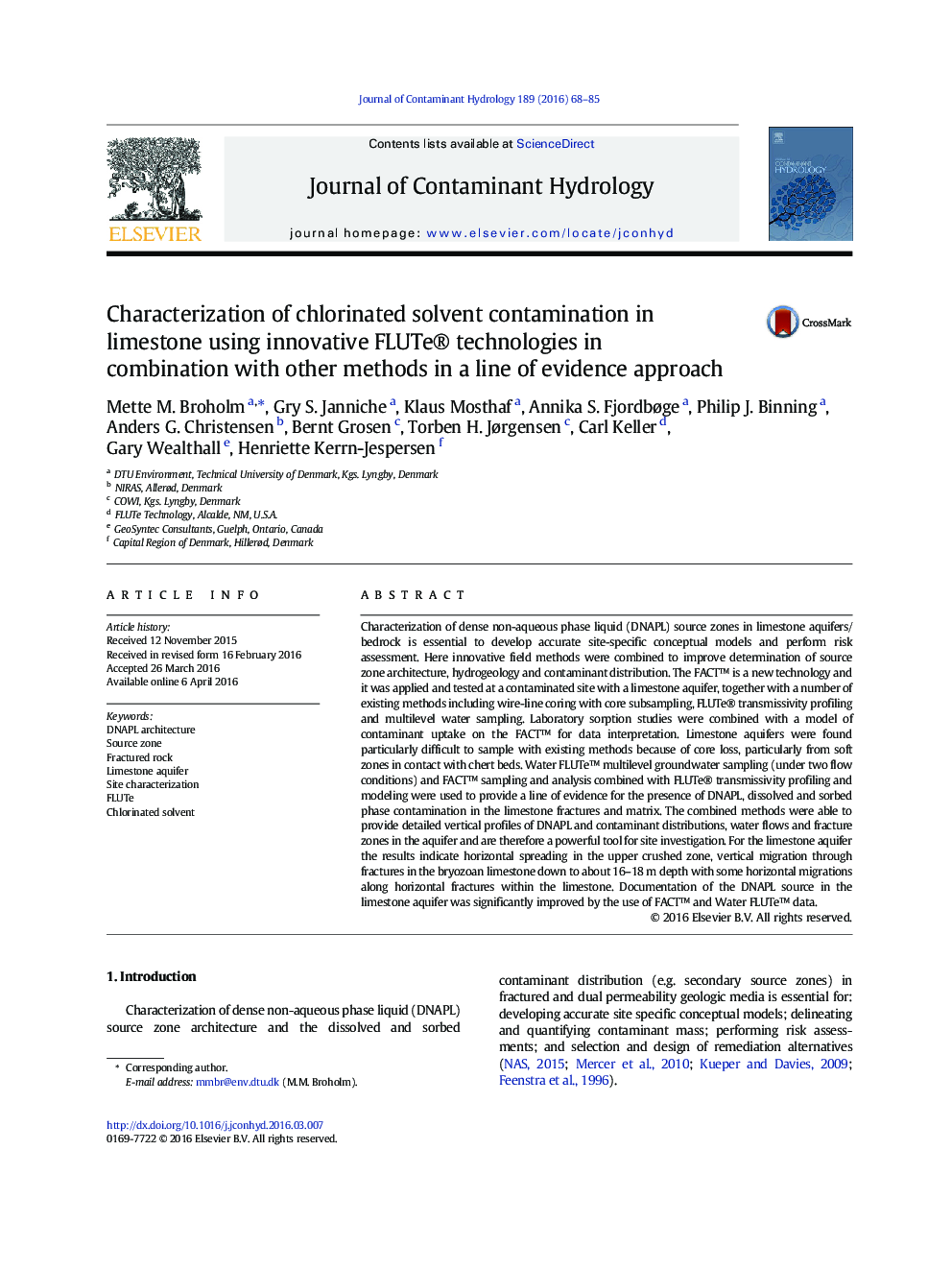| Article ID | Journal | Published Year | Pages | File Type |
|---|---|---|---|---|
| 4546395 | Journal of Contaminant Hydrology | 2016 | 18 Pages |
•Determination of DNAPL source architecture was improved by combining innovative field methods in a line of evidence approach.•FACTTM provided detailed information on the vertical distribution of chlorinated solvents in a limestone aquifer.•Modelling combined with AC sorption experiments enabled interpretation of FACTTM combined with FLUTe® transmissivity data.•Water FLUTeTM and FACTTM sampling and analysis provided important information regarding potential DNAPL presence.
Characterization of dense non-aqueous phase liquid (DNAPL) source zones in limestone aquifers/bedrock is essential to develop accurate site-specific conceptual models and perform risk assessment. Here innovative field methods were combined to improve determination of source zone architecture, hydrogeology and contaminant distribution. The FACT™ is a new technology and it was applied and tested at a contaminated site with a limestone aquifer, together with a number of existing methods including wire-line coring with core subsampling, FLUTe® transmissivity profiling and multilevel water sampling. Laboratory sorption studies were combined with a model of contaminant uptake on the FACT™ for data interpretation. Limestone aquifers were found particularly difficult to sample with existing methods because of core loss, particularly from soft zones in contact with chert beds. Water FLUTe™ multilevel groundwater sampling (under two flow conditions) and FACT™ sampling and analysis combined with FLUTe® transmissivity profiling and modeling were used to provide a line of evidence for the presence of DNAPL, dissolved and sorbed phase contamination in the limestone fractures and matrix. The combined methods were able to provide detailed vertical profiles of DNAPL and contaminant distributions, water flows and fracture zones in the aquifer and are therefore a powerful tool for site investigation. For the limestone aquifer the results indicate horizontal spreading in the upper crushed zone, vertical migration through fractures in the bryozoan limestone down to about 16–18 m depth with some horizontal migrations along horizontal fractures within the limestone. Documentation of the DNAPL source in the limestone aquifer was significantly improved by the use of FACT™ and Water FLUTe™ data.
